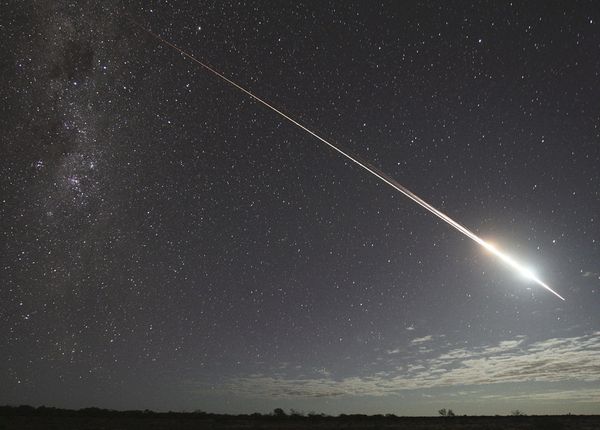NASA’s very successful Tropical Rain Measuring Mission (TRMM) satellite will mostly burn up upon reentry tonight. The latest estimated time of re-entry from Space-Track.org right now is 4 a.m. GMT, give or take 1.5 hours.
To show you just how uncertain these predictions are, that time was moved up by 35 minutes from a prediction just 12 hours before, which is almost half a world away in terms of distance. In other words, it just about impossible to know where the satellite will reenter, except that it will be between about 35 N and 35 S latitudes.
Orbital predictions are very accurate when all you have to account for is gravity; once atmospheric drag comes into play, it’s a whole different ball game.
This news article from a couple days ago quotes NASA as saying that about 12 spacecraft components could survive re-entry and hit the surface. They also say the chance that one of these could hit someone somewhere is 1 in 4,200. I’m a little surprised it’s that high. But then there are a couple billion potential targets. 😉
If I thought there was a decent chance it will reenter over the southeast U.S., I’d set my camera up for extended time lapse session tonight. But I’m pretty sure that would be a waste of time.

 Home/Blog
Home/Blog




